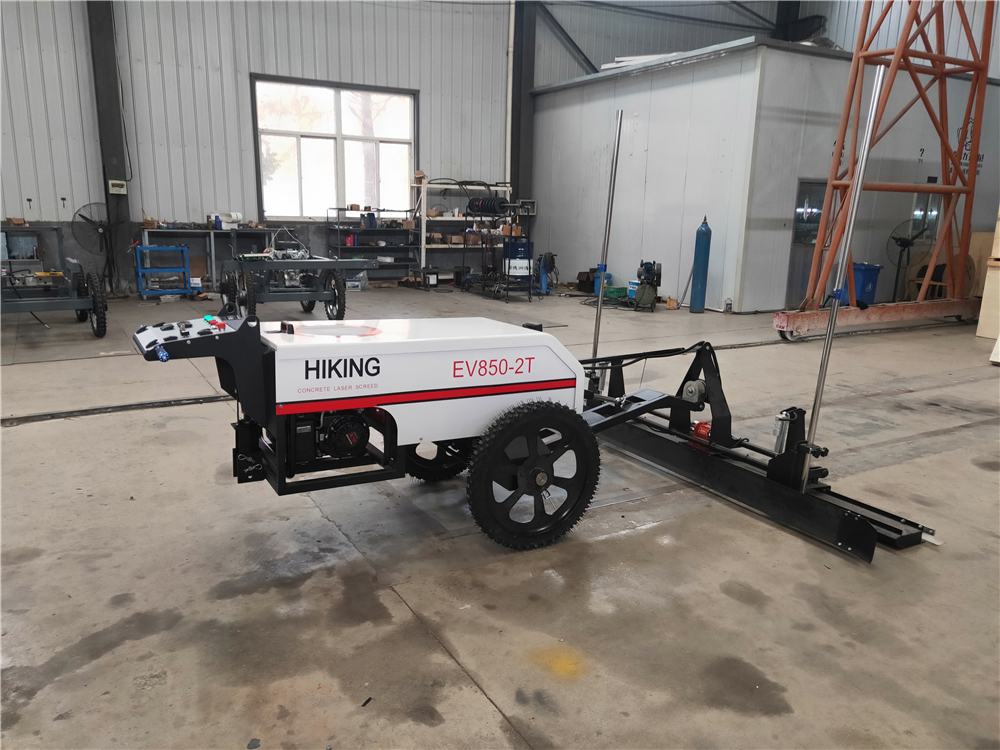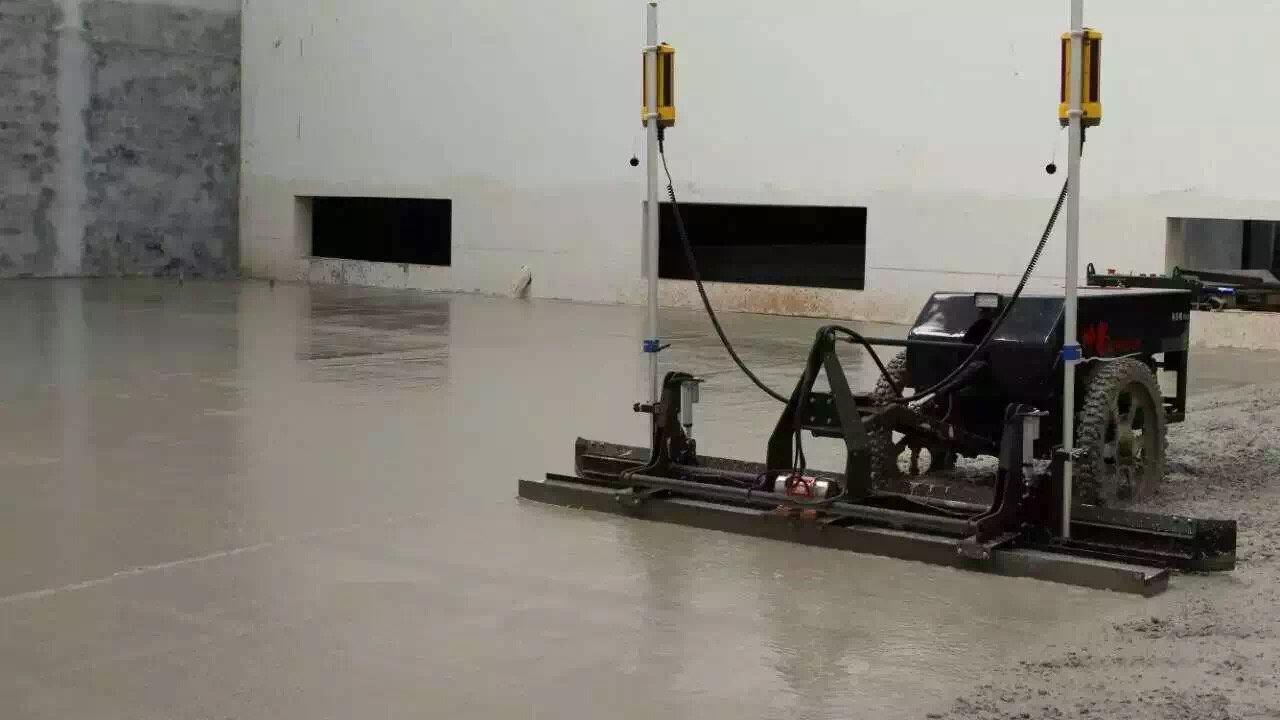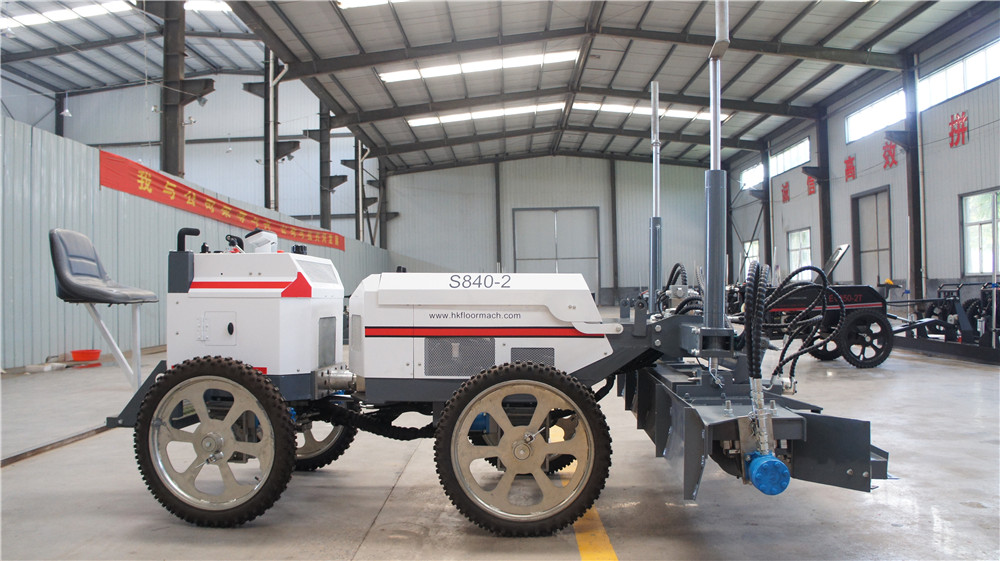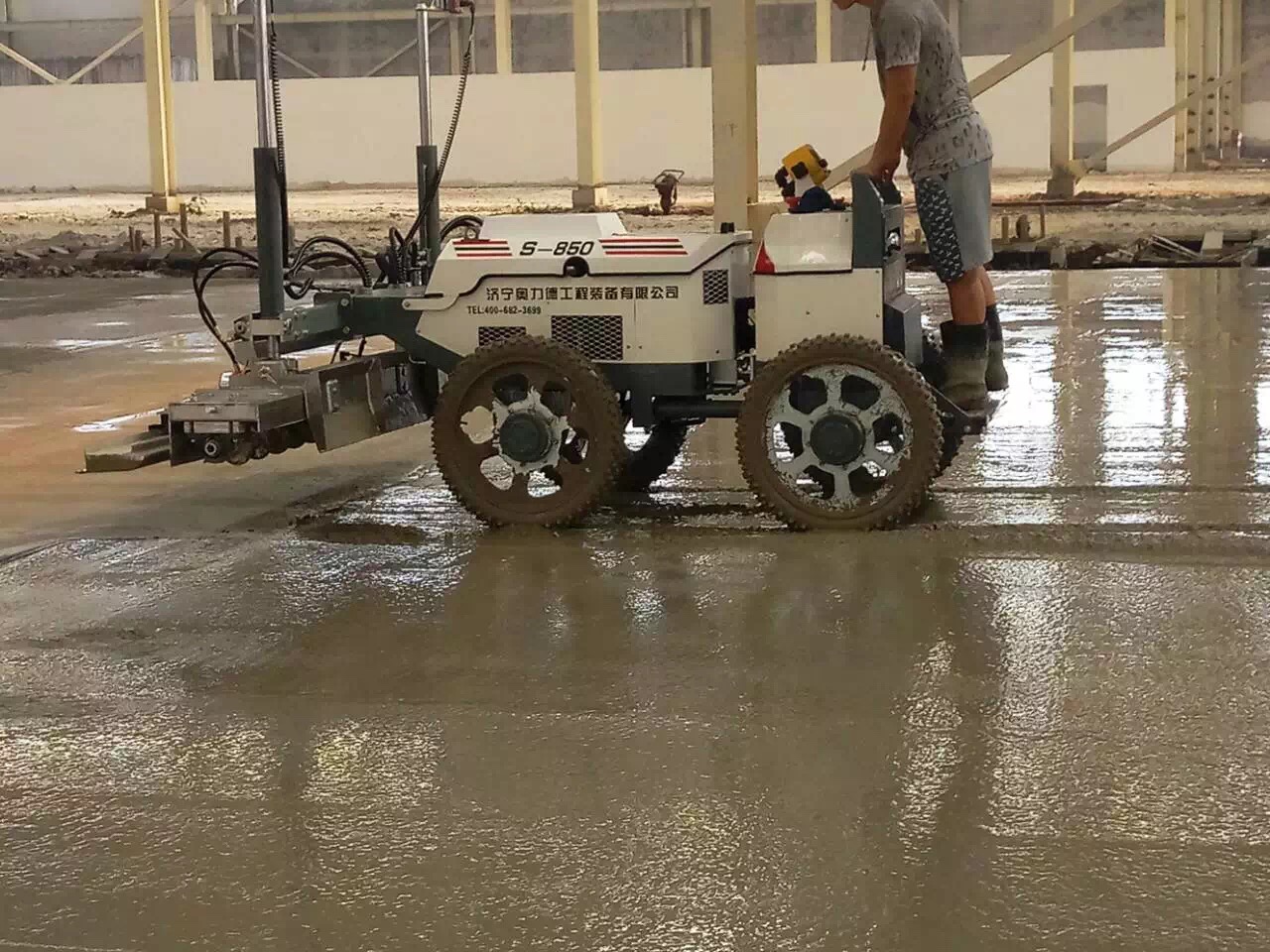Laser screed
Contents |
[edit] Introduction
Generally, concrete floors, other than those in buildings such as warehouses, are covered with a screed layer. This is a layer of material, usually a sand and cement mix, or a proprietary flowing screed. Screeds are generally laid to prepare for the installation of a floor covering, such as tiles, carpet or timber.
Laser screed machines have been developed due to the increasing demand for strength, smoothness and levelness in modern industrial buildings, large shopping malls, warehouses and other large area cement concrete floors.
The surface quality of cement concrete paved by precise laser screed machine is much better than that by conventional methods. The surface smoothness and levelness increases more than three times, and the compactness and strength increases by more than 20%. At the same time, it can improve work efficiency by more than 50% and save about 35% in labour.
It can easily lay high-strength concrete, low slump concrete and fiber clay.
The laser system is equipped with a variety of automatic control components, which can monitor the leveling head’s elevation 10 times per second in real time to ensure surface smoothness and levelness. At the same time, the vibration frequency of its strong vibrator reaches 4000 times per minute, which ensures the compactness of concrete vibration and makes the whole concrete base homogeneous.
[edit] Principles
The laser transmitter generates a rotating laser, and the laser receiver on the laser screed machine receives the signal, which is analysed by the laser measurement and control system. Deviation will be fed back to the sensitive computer control system on the laser leveller. The left and right linear actuators will adjust the height of the scraper to ensure leveling accuracy.
The hydraulic drive vibration motor produces vibration, driving the whole vibration plate together to vibrate the concrete,4000 times per minute.
The laser paver levels the ground without the need to pull control lines, nor does it need side templates to control the ground elevation. As long as the laser transmitter is not disturbed, it can ensure the overall elevation of the paved ground is not affected no matter where the laser screed machine moves.
[edit] Features
The leveling principle of laser screed machine is realised by using precise laser technology, closed-loop control technology and highly-precise hydraulic systems under the control of a computer.
The leveling principle of precision laser screed machine is that the leveling head driven by hydraulic force is combined with the laser system and computer control system to complete the leveling work at the time of automatic leveling. The leveling head is equipped with an integrated design of scraper, vibrator and flat plate, which integrates all leveling, vibration and compaction work at the same time.
The laser transmitter used to control the ground elevation is arranged independently, so that the ground elevation is not controlled by the template, and there are no cumulative errors.
A laser screed machine can also automatically control the longitudinal and transverse gradient, which is also accomplished by the laser system, computer system, hydraulic system and mechanical system. A three-dimensional special-shaped ground processing system can be selected for complex ground.
[edit] Application scope
With the development of laser technology and electronic technology and the high performance requirement of modern industrial floors, laser pavers have been used in the construction of concrete floors since the 1980’s.
Typical indoor applications include:
- Underground garages, general industrial workshops, workshops and automated three-dimensional warehouses.
- Clean workshops for electronics, electrical appliances, food materials and pharmaceuticals.
- Large warehousing supermarkets, logistics centers, convention and exhibition centers, etc.
Typical outdoor applications include:
- Wharfs, container yards and cargo yards.
- Airport runways, aprons and parking lots
- Plazas, residential ground, municipal road surfaces, etc.
[edit] Related articles on Designing Buildings Wiki
Featured articles and news
Latest Build UK Building Safety Regime explainer published
Key elements in one short, now updated document.
UKGBC launch the UK Climate Resilience Roadmap
First guidance of its kind on direct climate impacts for the built environment and how it can adapt.
CLC Health, Safety and Wellbeing Strategy 2025
Launched by the Minister for Industry to look at fatalities on site, improving mental health and other issues.
One of the most impressive Victorian architects. Book review.
Common Assessment Standard now with building safety
New CAS update now includes mandatory building safety questions.
RTPI leader to become new CIOB Chief Executive Officer
Dr Victoria Hills MRTPI, FICE to take over after Caroline Gumble’s departure.
Social and affordable housing, a long term plan for delivery
The “Delivering a Decade of Renewal for Social and Affordable Housing” strategy sets out future path.
A change to adoptive architecture
Effects of global weather warming on architectural detailing, material choice and human interaction.
The proposed publicly owned and backed subsidiary of Homes England, to facilitate new homes.
How big is the problem and what can we do to mitigate the effects?
Overheating guidance and tools for building designers
A number of cool guides to help with the heat.
The UK's Modern Industrial Strategy: A 10 year plan
Previous consultation criticism, current key elements and general support with some persisting reservations.
Building Safety Regulator reforms
New roles, new staff and a new fast track service pave the way for a single construction regulator.
Architectural Technologist CPDs and Communications
CIAT CPD… and how you can do it!
Cooling centres and cool spaces
Managing extreme heat in cities by directing the public to places for heat stress relief and water sources.
Winter gardens: A brief history and warm variations
Extending the season with glass in different forms and terms.
Restoring Great Yarmouth's Winter Gardens
Transforming one of the least sustainable constructions imaginable.


























